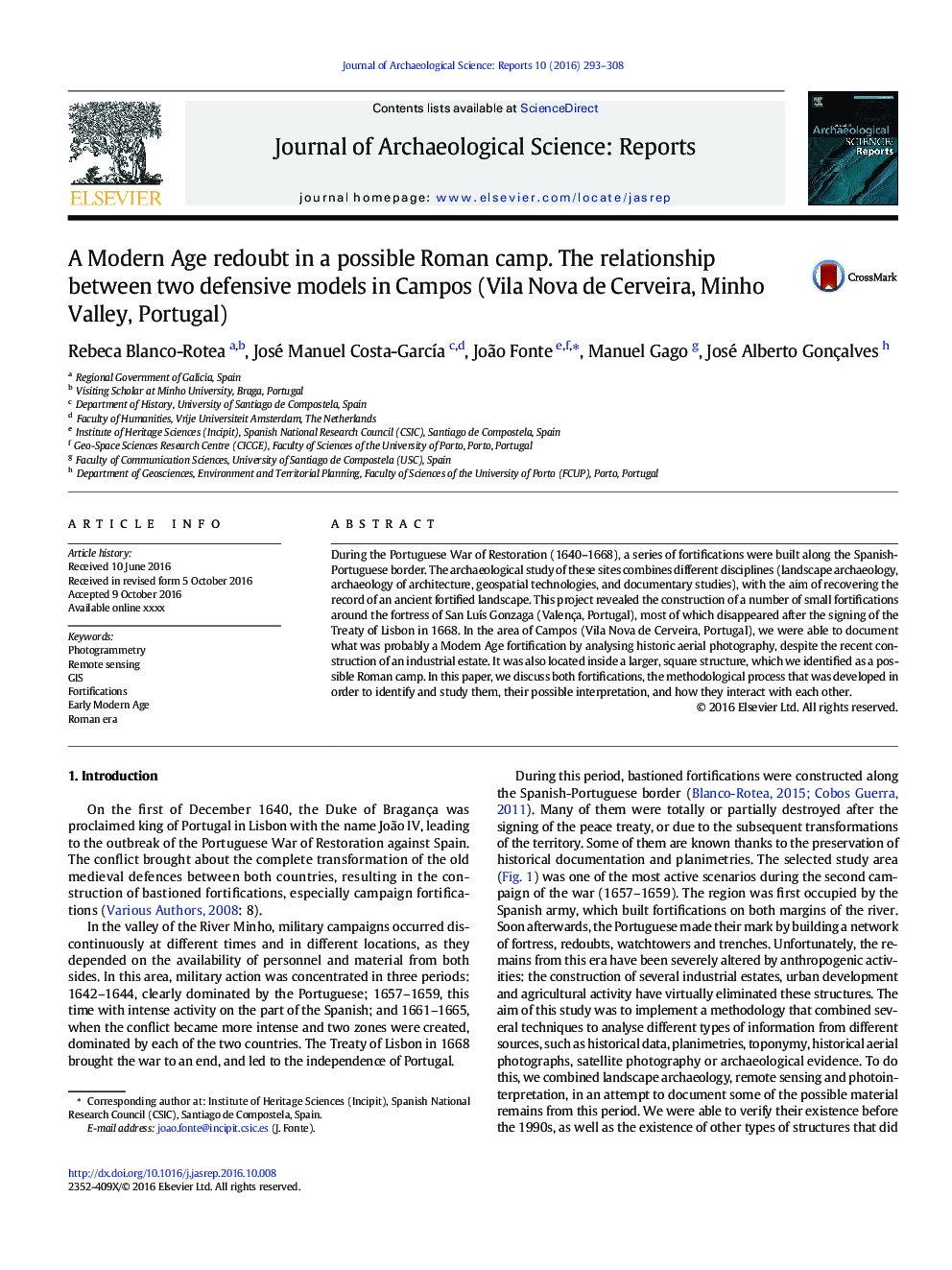| Article ID | Journal | Published Year | Pages | File Type |
|---|---|---|---|---|
| 5112244 | Journal of Archaeological Science: Reports | 2016 | 16 Pages |
Abstract
During the Portuguese War of Restoration (1640-1668), a series of fortifications were built along the Spanish-Portuguese border. The archaeological study of these sites combines different disciplines (landscape archaeology, archaeology of architecture, geospatial technologies, and documentary studies), with the aim of recovering the record of an ancient fortified landscape. This project revealed the construction of a number of small fortifications around the fortress of San LuÃs Gonzaga (Valença, Portugal), most of which disappeared after the signing of the Treaty of Lisbon in 1668. In the area of Campos (Vila Nova de Cerveira, Portugal), we were able to document what was probably a Modern Age fortification by analysing historic aerial photography, despite the recent construction of an industrial estate. It was also located inside a larger, square structure, which we identified as a possible Roman camp. In this paper, we discuss both fortifications, the methodological process that was developed in order to identify and study them, their possible interpretation, and how they interact with each other.
Related Topics
Social Sciences and Humanities
Arts and Humanities
History
Authors
Rebeca Blanco-Rotea, José Manuel Costa-GarcÃa, João Fonte, Manuel Gago, José Alberto Gonçalves,
